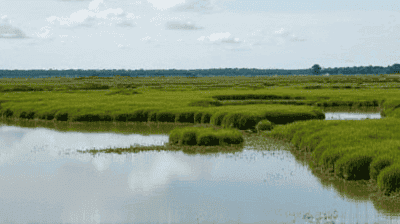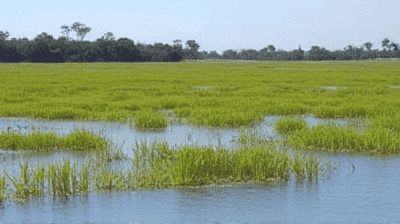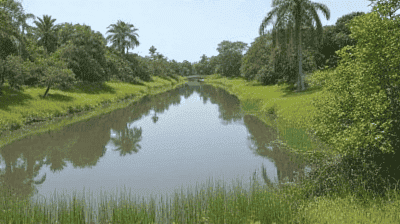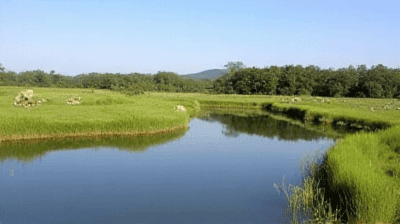
The Ramsar Convention, established in 1971 in the Iranian city of Ramsar, is an international treaty aimed at the conservation and sustainable management of wetlands worldwide. Spanning half a century, the Convention has sought to raise awareness of the importance of wetlands, ensure their protection, and promote sustainable practices that benefit both people and ecosystems. As we reflect on its 50 years of existence, it is essential to evaluate the successes and challenges of the Ramsar Convention. Has it effectively fulfilled its mission of global wetland protection, or has it fallen short of its goals?
Wetlands are diverse ecosystems characterized by the presence of water—either permanently or seasonally—supporting various unique plants and animals. They can be divided into several types, including marshes, swamps, bogs, and fens. Wetlands are found in every region of the world and vary widely in size, depth, and ecological function.
Wetlands provide a wealth of ecosystem services that are crucial to both nature and human society:
Biodiversity Reservoirs: Wetlands are home to approximately 40% of the world's plant and animal species, including many that are threatened or endangered.
Water Quality Improvement: Wetlands act as natural filters, trapping sediments, absorbing nutrients, and breaking down pollutants, leading to improved water quality downstream.
Flood Control: By absorbing and storing excess rainfall, wetlands help mitigate flooding and protect adjacent communities.
Carbon Sequestration: Wetlands are essential for carbon storage, sequestering significant amounts of carbon in their biomass and sediments, making them critical in the fight against climate change.
Livelihoods and Recreation: Many people rely on wetlands for their livelihoods, whether through fishing, agriculture, or tourism, and wetlands provide opportunities for recreation and education.

The Ramsar Convention arose in response to growing concerns about the degradation of wetlands and the loss of their ecological functions in the mid-20th century. Increased industrialization, urbanization, and agricultural expansion were leading to widespread wetland loss and unsustainable practices.
In 1971, representatives from 18 nations gathered in Ramsar, Iran, to sign the Convention. The Treaty aimed to promote international cooperation to conserve wetlands of international importance, designated as Ramsar Sites, and to ensure sustainable use of all wetlands.
The Ramsar Convention articulates several key objectives:
Conservation of Wetlands: Protecting and maintaining the ecological character of wetlands of international importance.
Sustainable Use: Promoting the sustainable use of all wetlands, recognizing their value for biodiversity and human livelihoods.
International Cooperation: Encouraging international cooperation in wetland conservation through regional agreements, knowledge sharing, and capacity building.
Since its inception, the Ramsar Convention has expanded significantly:
As of 2022, there are over 2,400 designated Ramsar Sites across more than 170 countries, covering over 250 million hectares of wetlands globally.
This growth reflects increasing recognition of the importance of wetlands on a global scale and the commitment of many countries to protect these vital ecosystems.
The Ramsar Convention has played a crucial role in raising global awareness about wetlands:
Initiatives such as World Wetlands Day, celebrated each February 2, have helped educate the public about the importance of wetland conservation and the threats they face.
The Convention has fostered collaboration among governments, NGOs, and local communities, increasing stakeholder involvement in wetland conservation.
The Ramsar Convention has created a range of resources to promote effective wetland management:
The Convention has developed guidelines on various topics, including wetland restoration, sustainable use practices, and the integration of wetland conservation into national policies.
Tools such as the Ramsar Wetland Inventory and the Ramsar Information Sheet assist countries in better understanding and managing their wetland resources.
The Ramsar Convention has encouraged integrated approaches to wetland management:
The concept of integrated water resources management (IWRM) promotes the coordination of land and water management, recognizing the interdependence of wetland health and freshwater systems.
The Convention supports an ecosystem-based approach that considers the broader landscape and the multiple benefits wetlands provide to communities.

Despite the successes of the Ramsar Convention, significant gaps remain in the implementation of its objectives:
Many countries struggle to translate international commitments into effective national policies and localized actions due to limited resources and capacity.
The disparity in capacity among countries can lead to unequal levels of protection and management of Ramsar Sites.
Sufficient funding is critical for effective wetland conservation:
Many member countries lack the financial resources necessary to implement wetland protection measures, conduct monitoring, and support sustainable management practices.
Finding sustainable financing mechanisms for wetland conservation continues to be a pressing challenge.
Climate change poses a significant and growing threat to wetland ecosystems:
Rising sea levels, altered precipitation patterns, and increased temperatures can lead to habitat destruction, shifts in species distributions, and loss of wetland functions.
The Ramsar Convention must address the increasing vulnerability of wetlands in the face of climate change, ensuring adaptive strategies are integrated into national policies.
Urbanization, industrialization, and agricultural expansion continue to threaten wetland ecosystems:
Many Ramsar Sites are increasingly at risk from development projects that encroach upon wetlands, undermining conservation efforts.
Balancing development needs with conservation objectives remains a significant challenge for governments and stakeholders.
To better understand the impact of the Ramsar Convention, we can explore specific case studies illustrating both successes and challenges.
The Florida Everglades is one of the largest wetland ecosystems in North America and has been designated as a Ramsar Site since 1987.
Conservation Initiatives: Efforts to restore the Everglades have gained traction over the past few decades, with significant public and governmental support.
Biodiversity Rebound: Restoration efforts have led to increased biodiversity, improvements in water quality, and enhanced recreational opportunities.
Collaborative Action: Successful collaboration among federal, state, and local agencies has been vital in protecting the Everglades and implementing effective management strategies.
The Okavango Delta is another Ramsar Site recognized for its ecological significance, serving as a critical habitat for diverse wildlife.
Development Pressures: The Delta faces increasing pressures from tourism, agriculture, and mining, which threaten its ecological integrity.
Water Extraction: Over-extraction of water for agricultural purposes in surrounding areas has begun to alter the hydrology of the Delta, affecting wildlife and plant communities.
Conservation Efforts: While there are ongoing efforts to promote sustainable tourism and water management, challenges remain in fully addressing the pressure from development and ensuring the long-term conservation of the Delta.

To strengthen the effectiveness of the Ramsar Convention, it is essential to foster collaboration among various stakeholders:
Partnerships: Building partnerships between governments, NGOs, private sectors, and local communities can bolster conservation initiatives and mobilize additional resources.
Knowledge Sharing: Encouraging the exchange of information, best practices, and lessons learned among countries can support more effective wetland management.
Investing in capacity building at local, national, and regional levels is crucial:
Training Programs: Providing training on wetland management techniques, policy development, and community engagement can empower local stakeholders to effectively protect and manage their wetlands.
Technical Assistance: Offering technical guidance to countries can enhance their ability to meet Ramsar obligations and develop tailored conservation strategies.
As climate change continues to pose significant challenges to wetlands, integrating adaptation strategies into Ramsar initiatives is essential:
Research: Supporting scientific research on the impacts of climate change on wetlands can inform adaptive management practices.
Resilience Planning: Developing resilience plans that incorporate climate change projections and scenarios can help wetlands better withstand future impacts.
The Ramsar Convention has made significant strides in raising awareness and mobilizing global action for wetland conservation over the past 50 years. Its successes, encapsulated in the designation of Ramsar Sites and the promotion of integrated approaches to wetland management, illustrate its critical role in protecting these vital ecosystems. However, challenges remain, including implementation gaps, funding shortfalls, and the ever-looming threat of climate change and development pressures.
As we reflect on the past, it is crucial to continue evolving and adapting strategies for wetland conservation to meet future challenges. Strengthening collaboration, enhancing capacity, and integrating climate adaptation strategies will be essential for ensuring the long-term protection of wetlands worldwide.
Going forward, the Ramsar Convention must remain a dynamic and responsive framework, united in its mission to safeguard the ecological integrity of wetlands for the benefit of biodiversity and human livelihoods alike. Only through concerted global effort, innovative thinking, and firm commitment can the Ramsar Convention truly be celebrated as a success story in the ongoing fight for wetland conservation.